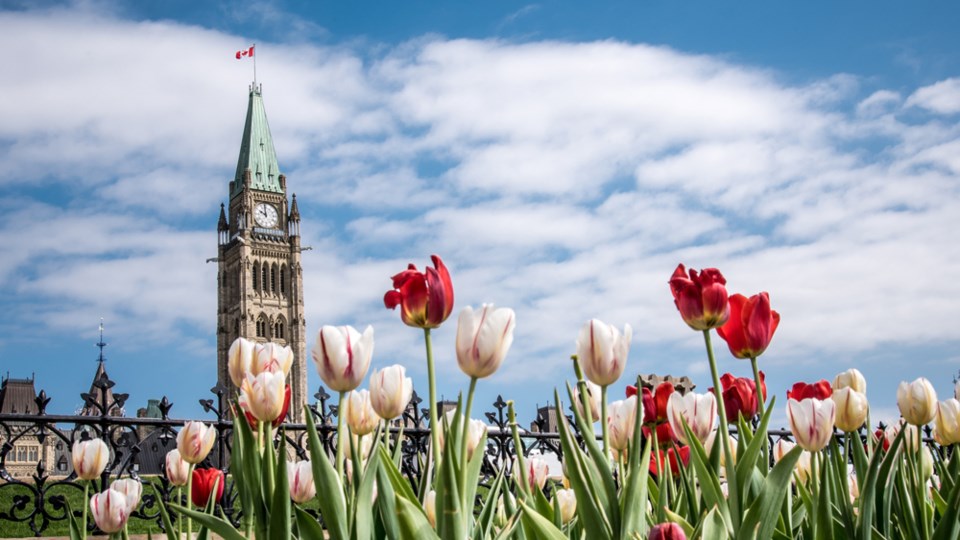Political observers were caught off guard last week when the Liberal Party and the New Democratic Party (NDP) unveiled a “supply and confidence agreement” that practically guarantees that there is no federal election in sa¹úŒÊŽ«Ãœ until 2025.
Research Co. and Glacier Media have conducted “exit polls” after the last two countrywide democratic processes that give us an indication of what could lie ahead.
, during an election where Justin Trudeau’s Liberals were reduced to a minority government and the Conservative Party was led by Andrew Scheer, we asked Canadian voters about four different possibilities for a formal merger of federal political parties. At the time, fewer than two in five Canadian voters said they would be “happy” if the New Democrats and the Green Party (37%) or the Liberals and the Greens (36%) became a single political entity.
The option of a new party encompassing Liberals, New Democrats and Greens was slightly more popular (43%), but almost half of Canadian voters (46%) said they would be happy with a formal merger between the Liberals and the New Democrats.
In 2019, at least half of Canadian voters in Quebec (53%), Saskatchewan and Manitoba (52%) and Atlantic sa¹úŒÊŽ«Ãœ (50%) welcomed the idea of a Liberal-NDP merger. The idea was not as popular in British Columbia (49%), Ontario (41%) and Alberta (37%). Canadians aged 18 to 34, who have usually given high ratings to both Trudeau and NDP leader Jagmeet Singh, were more supportive of this scenario (55%) than their counterparts aged 35 to 54 (43%) and aged 55 and over (42%).
The formal merger also had the blessing of more than two-thirds of voters who cast ballots for the Liberals (69%) and the New Democrats (73%) in 2019. As expected, 80% of Conservative voters said such a move, which never materialized, would make them “upset.”
Almost two years later, the Liberals sought to capitalize on their pandemic management to get a majority government. The fall of Afghanistan coincided with the first week of the campaign, allowing Canadians to get acquainted with Conservative leader, and former soldier, Erin O’Toole. In the end, the election returned a similar House of Commons, with the Liberals still in a minority situation.
, we asked about a formal governing agreement in Ottawa, similar to the one that has been established this month. The combination of Liberals, New Democrats and Greens would have made 38% of Canadian voters “happy.” A deal between Liberals and New Democrats had a higher rating (44%).
Once again, sa¹úŒÊŽ«Ãœ’s youngest voters were particularly pleased with the prospect of sanctioned Liberal-NDP co-operation (49%), with lower numbers among their counterparts aged 35 to 54 (43%) and aged 55 and over (41%). This time, more than seven in 10 Canadians who cast ballots for candidates representing the New Democrats (73%) or the Liberals (72%) agreed with the purported course of action.
Interim Conservative leader Candice Bergen’s recent statement suggesting that there would be “a lot of despair in the West” about the deal is not without merit. Six months ago, happiness with an arrangement featuring the Liberals and the NDP was highest in Atlantic sa¹úŒÊŽ«Ãœ (51%) and Ontario (49%), but fell markedly in Quebec (42%), Alberta and British Columbia (each at 39%) and Saskatchewan and Manitoba (37%).
We will have opportunities to see how Canadians react to this new deal as it develops. It has already provided an opportunity for Conservatives to rally the base in the hopes of surviving (such as Premier Jason Kenney in Alberta) or ultimately thriving (such as those seeking the now vacant leadership of the federal party). For the NDP, the situation is more complex. Recent history, at home and abroad, suggests that the senior party in this type of deal gets all of the credit in the next election, while the junior party faces a harsher public.
British Columbians remember a recent example. When the 2020 election was called, the minor participant in the 2017 agreement (the BC Green Party) had a new leader and was not able to connect as effectively when the major partner (the BC NDP) had become more popular on account of its pandemic management. A survey conducted by a now-defunct company suggested that voters were upset at the election’s timing. Those who pinned their hopes on this suggestion becoming an influential factor in the campaign were crushed.
Another case comes to us from the United Kingdom, where a coalition of Conservatives and Liberal Democrats formed the government in 2010. The minor partner joined a Tory-heavy cabinet with a list of issues they wanted to address, including a referendum to change the voting system, which was ultimately defeated. In the 2015 election, the Liberal Democrats were decimated, going to from 23% of the vote and 57 seats to 8% of the vote and eight seats.
The prospect of sa¹úŒÊŽ«Ãœ’s Liberals and New Democrats working together does not alienate the bases of each party. When we asked in 2019, support for a full merger between them reached a level that would practically guarantee a majority government. There is no indication that the two parties will entertain this possibility right now, but then again, two weeks ago few people expected to wake up to news of a “supply and confidence agreement” in Ottawa.
Mario Canseco is president of Research Co.
Results are based on an online study conducted from October 20 to October 21, 2019, among 803 adults in sa¹úŒÊŽ«Ãœ who voted in the 2019 federal election, and an online study conducted from September 18 to September 21, 2021, among 1,900 adults in sa¹úŒÊŽ«Ãœ who voted in the 2021 federal election. The data has been statistically weighted according to Canadian census figures for age, gender and region in sa¹úŒÊŽ«Ãœ. The margin of error, which measures sample variability, is plus or minus 3.5 percentage points (2019) and plus or minus 2.3 percentage points (2021), 19 times out of 20.




